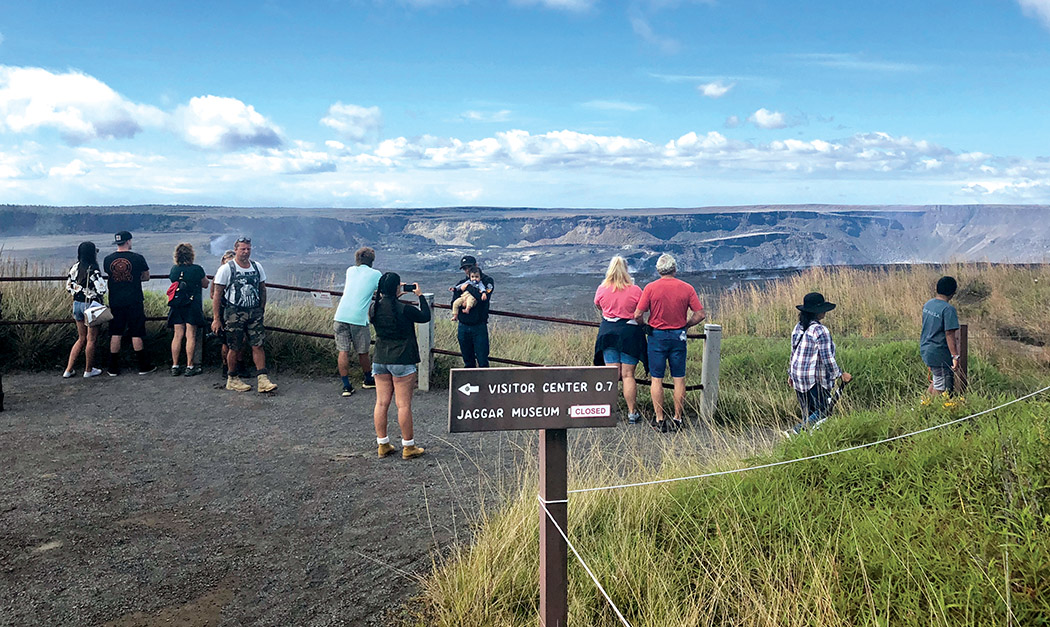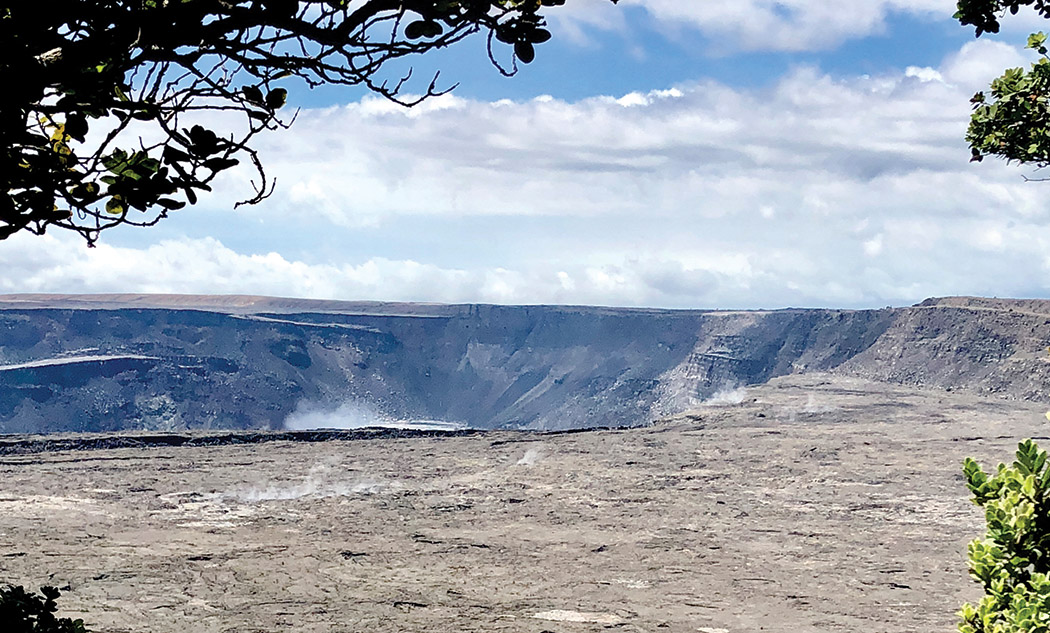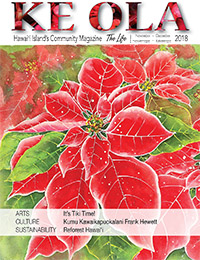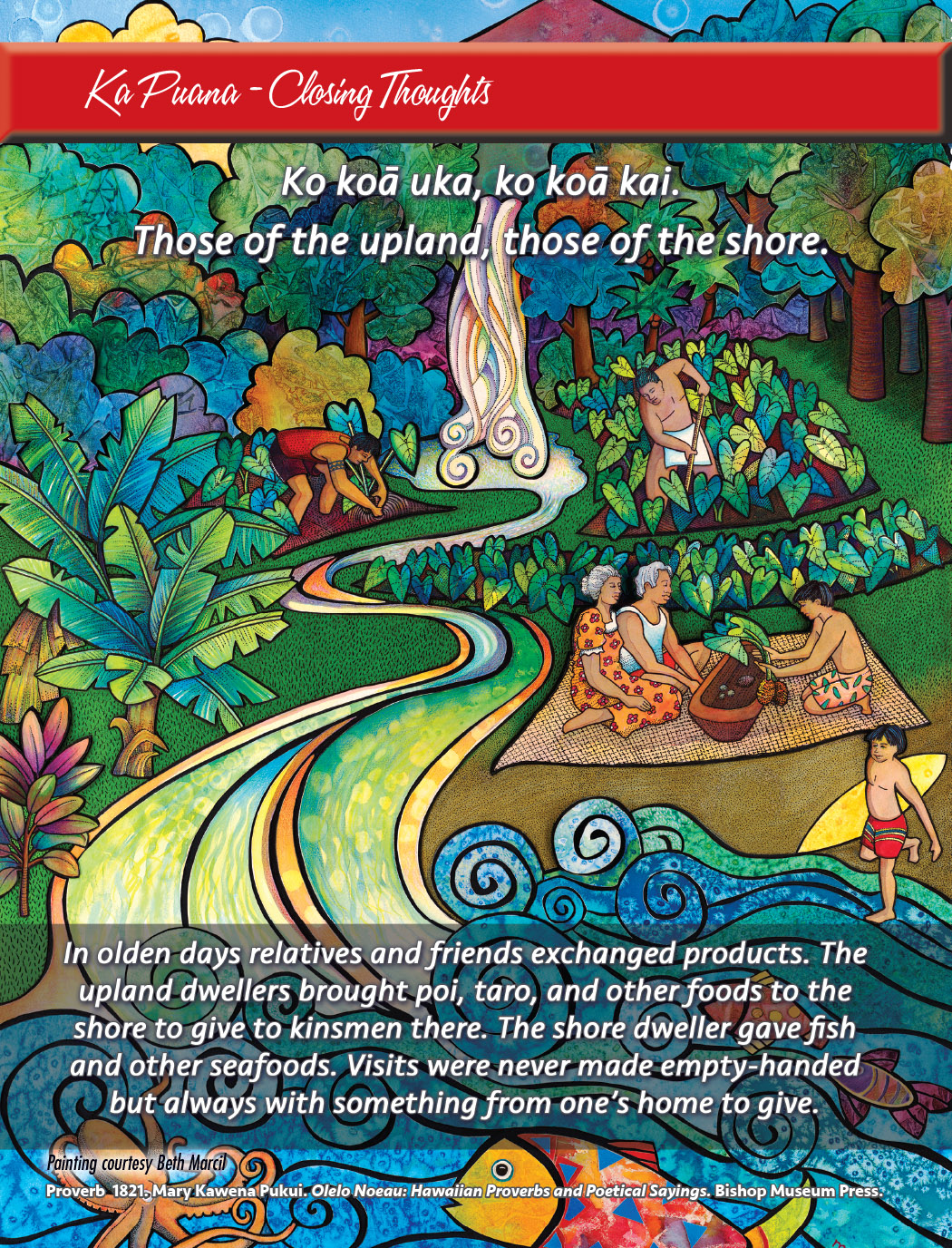
Halema‘uma‘u Rediscovered

By Gail Armand
At the edge of the newly revealed Halema‘uma‘u, the only sounds are the breaths as visitors encounter the crater with its changes for the first time since Hawai‘i Volcanoes National Park closed May 11, 2018. Along the trail, lined with blooming ‘ōhia, thousands of bamboo orchids, uluhe fern, ‘a‘ali‘i, and other indigenous plants, voices of the world speak together in soft tones of awe.
At the beginning of the trail, steam rises from within deep, old fern-lined cracks in the earth. Farther along the trail, ‘ōhelo berries look to be everywhere in the kīlau fern and grasses, a rich feast for the endangered nēnē (Hawaiian geese). As the trail terminates at Kīlauea Military Camp, the scent of the forest is sweet, the path covered with koa treesʻ crescent-shaped phyllodes. Maunaloa stretches beyond the forest of ‘ōhia and koa, a few puffy clouds forming a partial lei po‘o across the mountain’s gentle forehead.

This is an experience of creation, of the power of the earth. It is met with joy, with exhilaration. This is where we breathe with the planet itself, the mana of the hā, the sacred breath.
The eruption that closed Hawai‘i Volcanoes National Park began with the collapse of the Pu‘u ‘Ō‘ō Crater in late April. A cascade of events continued from there; the lower east rift zone (LERZ) eruption within Leilani Estates most dramatically brought our volcano into world view as lava erupted from the streets in front of people’s houses. Giant fissures opened in the ground, some cracks threatening to swallow entire buildings. One day there were cracks and steam and the next, lava.
Fissure 8, in lower Puna, became the dominant feature of the eruption, spilling tens of thousands of gallons of molten rock a minute into the landscape and ultimately the ocean.
Meanwhile, at the summit of Kīlauea Volcano, Halema‘uma‘u crater lost its lava lake. As the magma drained from the chambers beneath it, the walls began to fall inward. Over 40,000 earthquakes shook the summit, and 62 times the floor of Halema‘uma‘u collapsed, creating a hole today as deep as New Yorkʻs World Trade Center was tall.
Visually, the experience of the crater has vastly changed. It has widened to become an opening so large that even the floor is readily visible from Volcano House, onward. The entire landscape has opened into broad canyon-like vistas, with scenic old walls appearing around curves in the Crater Rim Trail, then sudden new cliffs with piles of rubble at their base.
There are outstanding views of the new crater between the Steam Vents and the military camp. The view from Volcano House alone will be mind bending for anyone who saw the crater before May. Halema‘uma‘u was a distant glow in April.
Today, it opens in front of you as if the earth is beckoning you into its redesign, an amphitheater forged in a few short weeks of earth movement on the grandest of scales. It is an extravagant sensation to realize the vistas you come upon here did not exist before August of this year. The last collapse of the caldera occurred August 3 and the park reopened on September 22. Come visit! ❖

For more information: nps.gov/havo/index.htm


